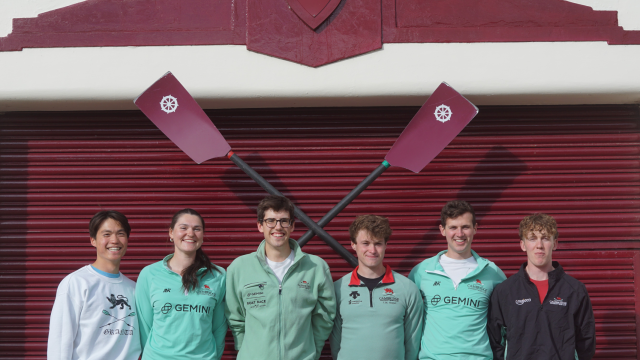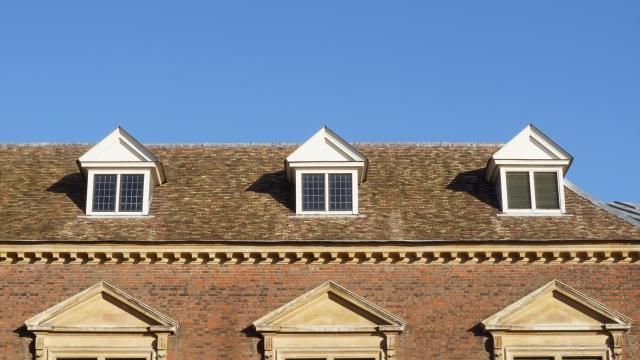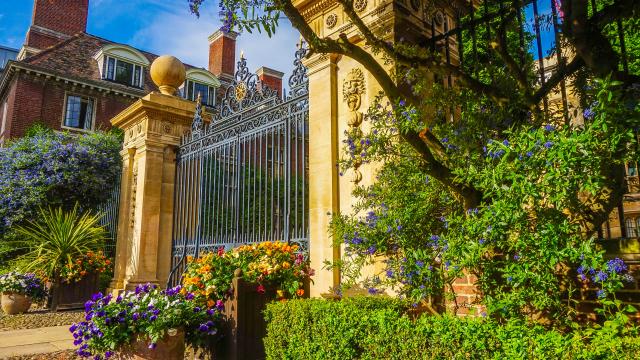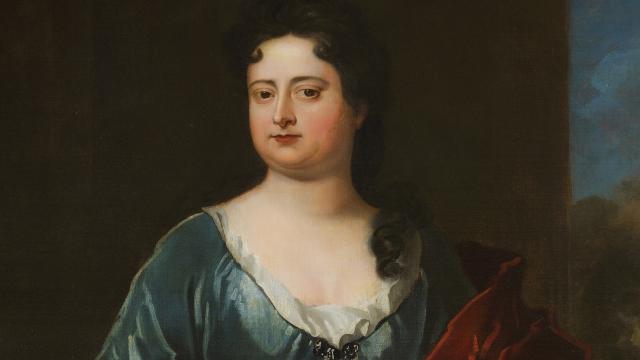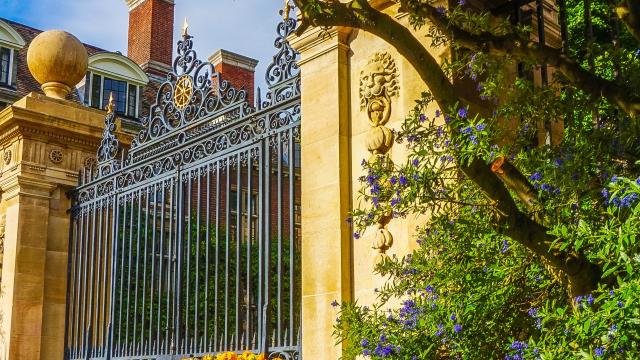
A Q&A with Professor Sir John Baker (1970), Honorary Fellow of St Catharine's College
From the start of the public health emergency caused by COVID-19, St Catharine’s has sought to protect staff from financial hardship and ensured everyone with a permanent or fixed-term contract of employment will continue to be paid as normal. How does this compare to the experience of employees historically?
Cambridge, alas, has not been unacquainted with epidemics over the centuries. They usually affected the town more than the gown, since the standard practice was for the University to prohibit all public assemblies, including lectures, sermons and exercises, to prorogue the term, and for everyone to go down, while the townspeople had no option but to remain.
The poor had to go on living cheek-by-jowl in crowded and often insanitary dwellings, deprived of the employment that the University normally provided. There were plague booths built on Midsummer Common, where infected individuals usually died. The great plague of 1665–66 killed 920 residents of Cambridge, doubtless including some college servants, but not one of the dead was a member of the academic community. It was during this outbreak that Isaac Newton, having just received his BA, retired to the country and spent his forced isolation developing his theories concerning calculus, optics and the law of gravity. 152 years earlier Erasmus had left Cambridge to escape the infection of 1513.[1]
The College’s Fellowship includes scientists advancing our understanding of COVID-19 and physicians treating patients on the frontline in the NHS, working with colleagues from across the University and internationally. How did the academic community respond to the threat of disease in the past?
Contemporary opinions were divided as to the science behind these epidemics. To theologically oriented dons, God was obviously behind all the horror. But God seemed to wreak his vengeance mostly on the poor, and this could best be explained by distinguishing the existence of the disease from the means by which it was spread.
In the 1580s a disputation was held in the Schools on the question, An pestis communicatur proximis?[2] Examinations being oral, the answers have not survived. But on 21 November 1574 the vice-chancellor, Dr Andrew Perne, president of Queens’ College, sent Lord Treasurer Burghley his own theories:[3]
Although we must confess that our sins is the principal cause of this and all other plagues sent by Almighty God, yet the secondary cause and means that God did use to bring the same (so far forth as I do understand) is not the corruption of the air, as the physicians say at this time, but partly by the apparel of one that came from London to Midsummer Fair and died of the plague in Barnwell, where the plague hath been and now is most vehement. The other cause, as I conjecture, is the corruption of the King’s Ditch which goeth through Cambridge.
The College has been working intensively with the University to follow the latest official advice designed to limit the spread of infections, including regularly sharing public health information with our students, staff and Fellows so that everyone can play their part. Are there any parallels with the measures taken during previous epidemics?
Yes, indeed. Perne’s letter went on to report:
There was order taken at the beginning of the plague by Mr Dr Whitgift, then vice-chancellor, with the consent of the heads of the colleges, for the breaking up of the colleges and for the forbearance of any common assemblies until after Christmas, and that such scholars as should remain in the colleges should keep their gates shut for the avoiding of the company of those that be infected with the plague – the which do go abroad both in the day-time and in the night-time – though there be never so good and strait order taken by us for the shutting up of the doors of those houses the which be infected, having all necessaries provided for them and their families, as well in Cambridge as also in Barnwell.
Incidentally, he noted that some of the poor people actually welcomed the plague, because they were better provided for by charity than at other times. The tradesmen, on the other hand, suffered a serious loss of income from the scholarly exodus and from the ‘shutting up of the doors’.
The authorities, at national and local level, thought that social distancing was the best way of containing the disease.[4] Perne criticised ‘that perverse judgment that one Christian ought not to avoid the company of another that is infected’, since the disease (like a poison) would naturally infect others unless ‘it pleaseth Almighty God of his goodness’ to dispense supernaturally with the ordinary course of nature, which was not to be expected: ‘Some in Cambridge who, being alive, did tempt God in this sort are dead of the plague at this time.’[5] The University, nevertheless, seemed to have escaped more or less unscathed. And that was the usual experience. Three years later the University was prorogued for nearly five months, from 12 October 1577 to 5 March 1578, and there were further closures on several occasions into the seventeenth century. It was almost a routine.
A small number of undergraduates and postgraduates remain in College accommodation and the College is committed to ensuring their safety and security, including maintaining social distancing measures and prohibiting visitors. Historically, what was life in College like during epidemics?
Those few who remained took every precaution they could to protect themselves. Joseph Mead wrote from Christ’s College in 1625, ‘It grows very dangerous on both sides to continue an intercourse of letters, not knowing what hands they pass through before they come to those to whom they are sent’. Hobson, the carrier, was obliged at that time to discontinue his business of bringing letters and goods from London.[6]
Caius College made regulations in 1630, ‘that all the Bedmakers, except two, be immediately turned out of the college, and be allowed two shillings apiece every week. That a man be hired for 5s. a week for attending constantly at the gate, to go of errands into the town.’[7] Dr Butts, the vice-chancellor, reported that ‘besides constables we have certain ambulatory officers who walk the streets night and day to keep our people from needless conversing’.[8] But the Old Schools and the colleges were in fact largely deserted. Dr Ward, master of Sidney Sussex College, wrote on 25 May 1630 to the archbishop of Canterbury:[9]
Whereas this was the chief time of the year for acts and disputations, there hath happened the most doleful dissolving of our University, and the most sudden dispersion of our students that I ever knew, occasioned by the infection brought hither by a soldier or two dismissed not long since from the king of Sweden’s army in February last. So as, whereas this time was our chief time of the year for acts and disputations, now our school-gates are shut up and our colleges left desolate and empty almost … The magistrates are careful, but the charge groweth great, both in maintaining the infected and the poor amongst us, which want both means and work.
The safety and wellbeing of our community is of the utmost importance. The College is committed to providing welfare support for students, staff and Fellows. What happened to the academic community at a time when mental health issues were stigmatised?
There was nothing that would compare to our modern welfare resources, and some members of the academic community in Cambridge felt the burden of social isolation. For example, vice-chancellor Dr Butts, who worked tirelessly with the mayor to impose plague regulations on the town, lamented, ‘Myself am alone a destitute and forsaken man, not a scholar with me in college, not a scholar seen by me without’.[10] Worn out by his exertions, he committed suicide in the Master’s Lodge in Corpus on Easter day 1632.
All teaching is being conducted remotely for the remaining part of this academic year, and Departments and Faculties are introducing new mechanisms for assessment. In the absence of the internet to support remote teaching and assessment, did students’ education suffer during epidemics in the past?
Some students went with their tutors into the country and were taught there. Some of the wealthier colleges even had annexes in more salubrious parts of the country where collegiate life could continue. Study away from Cambridge was encouraged, provided the students continued to pay their fees.[11]
However, others took advantage of the suspended examination regulations. Thomas Fuller, fellow of Sidney Sussex College, noted that ‘this corruption of the air proved the generation of many doctors, graduated in a clandestine way, without the keeping of any acts, to the disgust of those who had fairly gotten their degrees with public pains and expense.’[12]
[1] D. R. Leader, A History of the University of Cambridge: Vol. I, The University to 1546 (Cambridge, 1988), p. 213.
[2] Leader, op. cit., p. 212.
[3] C. H. Cooper, Annals of Cambridge (Cambridge, 1842-53), ii. 322. All quotations modernised.
[4] A proclamation for adjourning the Michaelmas law term 1592 to Hertford Castle provided that any infected person who was specially commanded to appear in court should ‘bear and hold up in his hand upright to be seen one red rod of the length of one yard or more, upon pain of her majesty’s displeasure and imprisonment of their bodies’: Tudor Royal Proclamations, ed. P. L. Hughes and J. F. Larkin, vol. iii (New Haven, 1969), p. 114.
[5] Cooper, Annals, ii. 323.
[6] Ibid., iii. 179.
[7] J. Venn, Caius College (1901), cited in ‘Pandemic: Then and Now’ on the Gonville and Caius College website.
[8] Ibid. 228.
[9] Cooper, Annals, iii. 223.
[10] Ibid. 228.
[11] See, e.g., Leader, op. cit., p. 213.
[12] T. Fuller, History of the University of Cambridge to 1634 (M. Prickett and T. Wright ed., Cambridge, 1840), p. 231.
